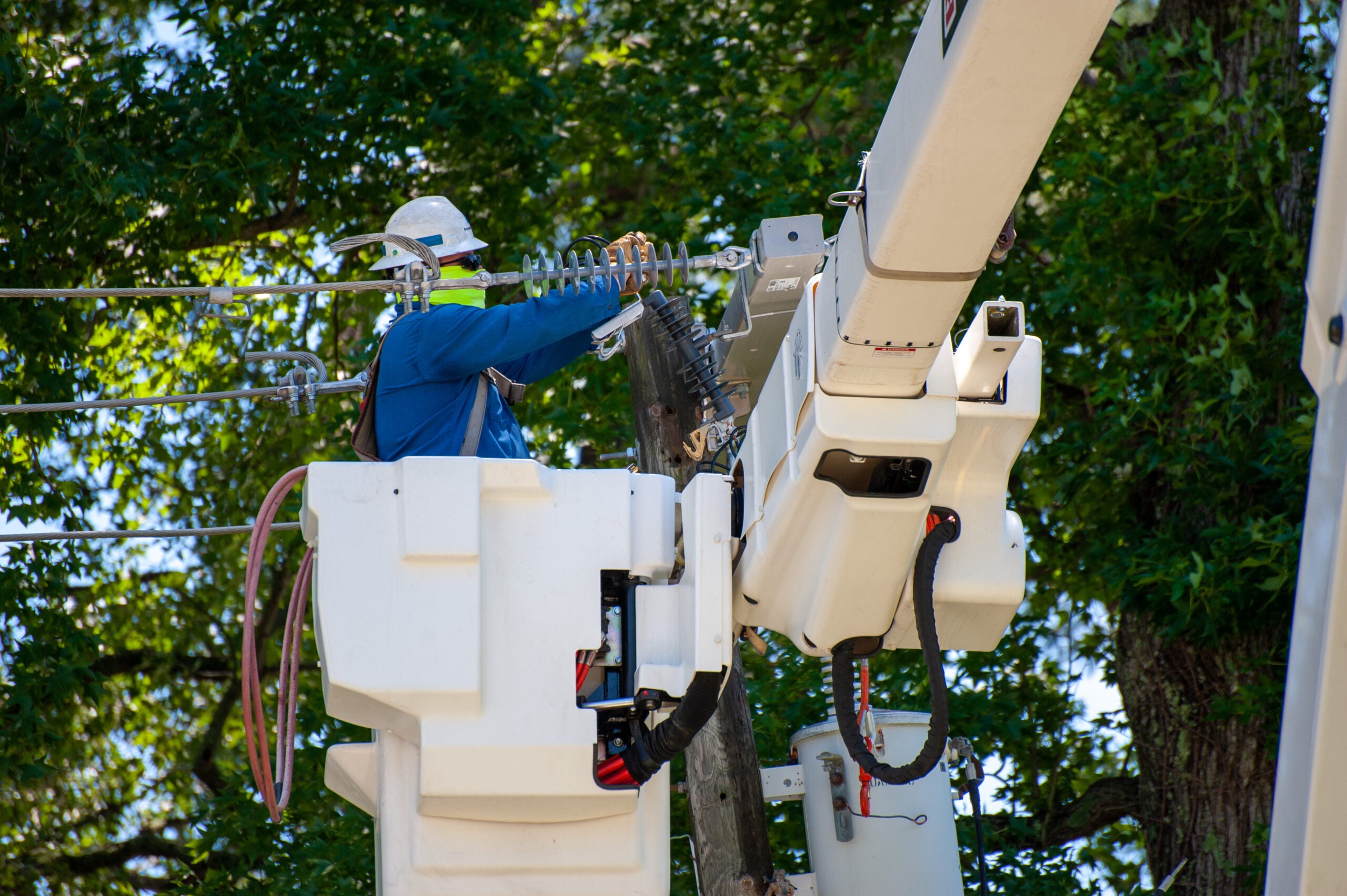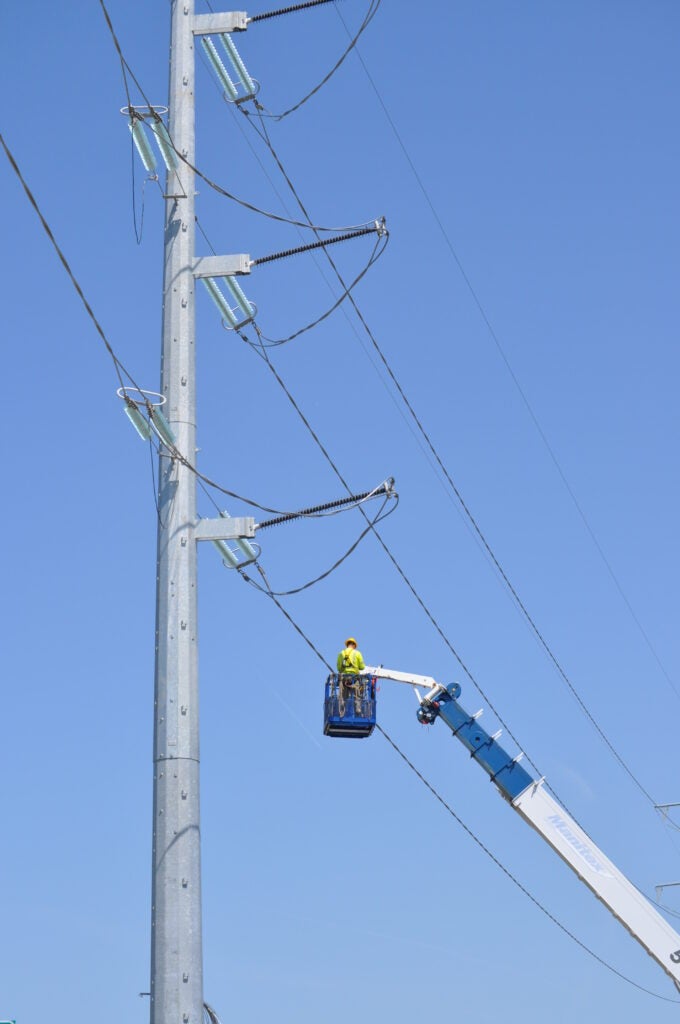
Consisting of more than 9,200 electric generating units, 600,000 miles of transmission lines and more than one million megawatts of connected generating capacity, the US electric grid is a behemoth that keeps the country running.
This invaluable infrastructure, most of which was built at the beginning of the last century, is facing winds of change and new pressures, however. Experts say that without modernisation, the grid will be a bottleneck for the Biden Administration’s massive renewable energy expansion plan that is targeting all electricity to be renewable by 2035.
What’s more, it’s also contending with a sustained uptick in extreme weather events due to climate change, and the general disruption brought by an industry undergoing rapid technological change. But these novel technologies can transform the grid to meet these challenges.
Building a weather-resistant grid
Power outages from severe weather events have doubled over the past two decades across the US, according to an Associated Press analysis of government data. Experts agree that grid operators and utilities need to be better prepared.
Physical grid hardening, such as burying infrastructure underground where possible and affordable, is already planned; the US Department of Energy (DOE) is to establish a $5bn grant program for just this. But a ”complimentary” strategy could be to operate the grid in smaller sections, says Alexandra Sascha von Meier, director of the California Institute for Energy and Environment’s electric grid program.
“This allows operators to restart smaller pockets of the grid more quickly,” she says. “As they configure some of the circuits, the network can be refigured based on what assets are working and what’s not.

US Tariffs are shifting - will you react or anticipate?
Don’t let policy changes catch you off guard. Stay proactive with real-time data and expert analysis.
By GlobalData“Utilities should have more flexibility in adapting when part of the grid infrastructure is damaged so they can provide electricity where it’s needed most, such as at a hospital.”
Achieving this would depend on the adoption of technologies, such as smart electric service panels that enable a limit to be set on how much power is going to be supplied to a home or building, or apps that allow customers to reduce and prioritise their energy use.
Using proactive predictions to ensure grid resilience
Another option is to start actively including the possible impact of climate change in predictive modelling, rather than relying only on historical data, which is commonplace.
Mckinsey and Company research shows that climate risk and resilience modelling can provide operators with the necessary information to make the right calls at the right time. It notes this can be achieved by mapping assets, creating vulnerability curves and risk heat maps, modelling detailed grid-impact scenarios and identifying and testing resilience measures.
Such modelling will yield mitigation measures, which can be implemented in practice, and the entire practice could become more important as more renewables enter the energy system.
“With wind and solar very much weather dependent, there is considerable risk if developers and operators fail to consider major weather events and our changing climate in their planning and operating of renewable energy sites,” says Giridaran Srinivasan, CEO for the Americas at Solargis.
Equipped with knowledge, operators can take corrective or preventive measures by charging storage systems ahead of unusual weather events, allowing them to balance out variability, he adds.

“We need the data infrastructure for better monitoring”
Intermittent renewable energy and more distributed energy resources – such as electric vehicles, rooftop solar and battery storage – demand more flexible grid management.
The bipartisan infrastructure bill acknowledges this and authorises $3bn in the Smart Grid Investment Matching Grant Program to deploy technologies that enhance grid flexibility. Monitoring could prove a key component of realising the bill’s lofty targets, and von Meier believes that such work could be vital in giving operators better visibility of their assets.
“That has traditionally been done at the transmission level, but I think it needs to filter to the local medium voltage or distribution level to understand better what’s connected and what’s safe to operate,” she says. “This will allow these networks to be operated more nimbly and at more granular scales, but it needs the data infrastructure to handle the information.”
American company PingThings has been awarded over $8m by the National Science Foundation, ARPA-E, and the DOE, to develop its PredictiveGrid platform which uses advanced AI to analyse and visualize high-definition sensor data at grid scale.
Pointing to PingThings, von Meier says the technology exists and is starting to be used but that the industry is still very ”conservative” in making the investment, a hesitancy which is at odds with the range of new products being made available for energy management.
Dominion Energy, for instance, a utility in Virginia, has devised a plan to use batteries within electric school buses as a grid flexibility asset. It hopes to use the $16m project to integrate vehicle to grid technology into its commercial operations using a bidirectional energy-management system, called APEX, provided by Proterra, an automotive and energy-storage company based in California.
Grid assets for offshore wind
The Biden Administration is targeting of offshore wind by 2030. Presently, the first of these projects are being developed with radial – point to point – links to shore, where developers must then enter the onshore grid interconnection queue.
Research has determined a better way to manage these offshore energy resources, however. Building an integrated high-voltage, direct current (HVDC) grid network – where cables and substations are combined, rather than having two separate links – can significantly reduce land use and siting issues and save millions, studies have found. HVDC cables also allow for much higher levels of energy transported with fewer losses.
Research by the UK National Grid ESO found that taking an “integrated approach” for all offshore projects to be delivered from 2025 could save consumers approximately $7.3bn in capital and operating expenditure between now and 2050, while the cost ofcables and onshore landing points could be reduced by around 50%.
The technology is already being trialled and deployed in Europe, which is much more advanced in offshore wind deployment. German and Dutch transmission network operator TenneT is already undertaking plans to integrate several offshore wind transmission links between Germany and the Netherlands.
The US National Renewable Energy Laboratory is exploring use of the technology, but says more research is still needed to confirm the compatibility of offshore and onshore components, as well as the effects of multiterminal HVDC strategies on grid control, operation, reliability and resiliency.
Solar power, battery technology and microgrids
Consumer participation in energy markets and incentivising commercial users to participate in load balancing are also important for a resilient grid, says Srinivasan.
“On the load side, it’s essential to incentivise the end-users to get involved in the energy market and offer benefits to the consumers who take part in dynamic load support to the utility by turning off their high load equipment during peak periods. This way, the stress on the operator is highly reduced and helps in better stability,” he says.
He highlights the non-profit California Independent System Operator which he believes has led the way in terms of short-term storage adoption, with more than 2.5GW of storage is already online, offering frequency and grid support for utility companies.
Indeed, von Meier takes this further, saying there should be more focus on off-the-shelf solar-plus-battery microgrid technology that can be built at any scale.
“Solar microgrids have the opportunity to tack two problems; decarbonising and providing reliability resilience,” she says. “Using this technology, multiple neighbours could join together in an ad hoc solar micro grid in an emergency or during blue sky conditions; however, there are regulatory hurdles that make it difficult to do this on a formal basis.”
Regulations ”essentially put the electric utility in the driver’s seat” she says, meaning it is only possible to operate them with their cooperation, and ensuring their support could be vital to modernising the US energy grid.
However, von Meier believes that overall, the Biden Administration is ”definitely moving in the right direction” with the infrastructure bill.
“I think the question is, not if, but when these things will be adopted, the more we feel the impact of climate change, the more we will be motivated to do long term planning and make the investments,” she concludes.



